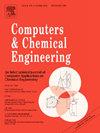在化学工程中建立混合人工智能模型:教程回顾
IF 3.9
2区 工程技术
Q2 COMPUTER SCIENCE, INTERDISCIPLINARY APPLICATIONS
引用次数: 0
摘要
现代机器学习(ML)方法擅长从大量数据集中学习,并在文本预测、推荐系统和聊天机器人等传统应用中展示了卓越的性能。然而,它们在科学和工程中的应用受到诸如有限的可解释性、对幻觉的敏感性以及缺乏第一性原理知识基础等挑战的限制。这些限制可以通过结合符号或经典人工智能(AI)方法来克服,这些方法已经在化学工程中应用了40多年。本文概述了将领域知识纳入AI/ML工作流的系统方法,从而开发混合AI模型。我们提出的四阶段过程包括(1)知识评估,(2)领域知情问题制定,(3)选择适当的AI/ML模型,以及(4)模型验证。此外,我们提出了混合人工智能开发的六个常用模板:特征工程、自定义知识表示、附加约束的强加、这些方法的集成、自定义模型体系结构设计和端到端特定领域的人工智能模型。这些模板是通过不断增加的“杂交”水平来组织的,反映了领域知识的日益高级的集成。目标是从大型语言模型(llm)范式迁移到大型知识模型(lkm)范式,后者能够更好地满足科学和工程应用程序的独特需求。本文章由计算机程序翻译,如有差异,请以英文原文为准。
Building hybrid AI models in chemical engineering: A tutorial review
Modern machine learning (ML) methods excel at learning from vast datasets and have demonstrated exceptional performance in conventional applications like text prediction, recommender systems, and chatbots. However, their application in science and engineering is constrained by challenges such as limited explainability, susceptibility to hallucinations, and a lack of grounding in first-principles knowledge. These limitations could be overcome by incorporating symbolic or classical artificial intelligence (AI) methods, which have been applied in chemical engineering for more than four decades. This paper outlines a systematic approach to incorporating domain knowledge into the AI/ML workflow, resulting in the development of hybrid AI models. Our proposed four-stage process includes (1) knowledge assessment, (2) domain-informed problem formulation, (3) selection of an appropriate AI/ML model, and (4) model validation. Additionally, we present six commonly used templates for hybrid AI development: feature engineering, customized knowledge representation, imposition of additional constraints, integration of these approaches, custom model architecture design, and end-to-end domain-specific AI models. These templates are organized by increasing levels of “hybridization”, reflecting progressively more advanced integration of domain knowledge. The goal is to migrate from the paradigm of large language models (LLMs) to large knowledge models (LKMs), which are better positioned to meet the unique demands of science and engineering applications.
求助全文
通过发布文献求助,成功后即可免费获取论文全文。
去求助
来源期刊

Computers & Chemical Engineering
工程技术-工程:化工
CiteScore
8.70
自引率
14.00%
发文量
374
审稿时长
70 days
期刊介绍:
Computers & Chemical Engineering is primarily a journal of record for new developments in the application of computing and systems technology to chemical engineering problems.
 求助内容:
求助内容: 应助结果提醒方式:
应助结果提醒方式:


